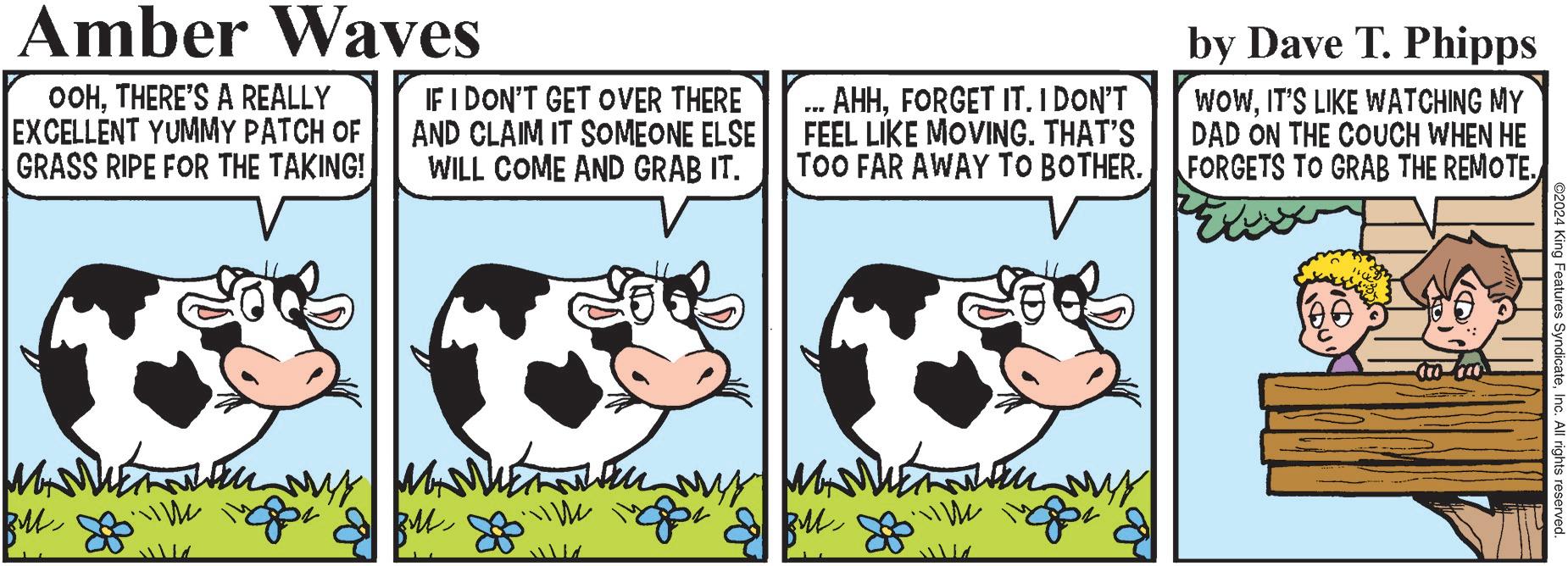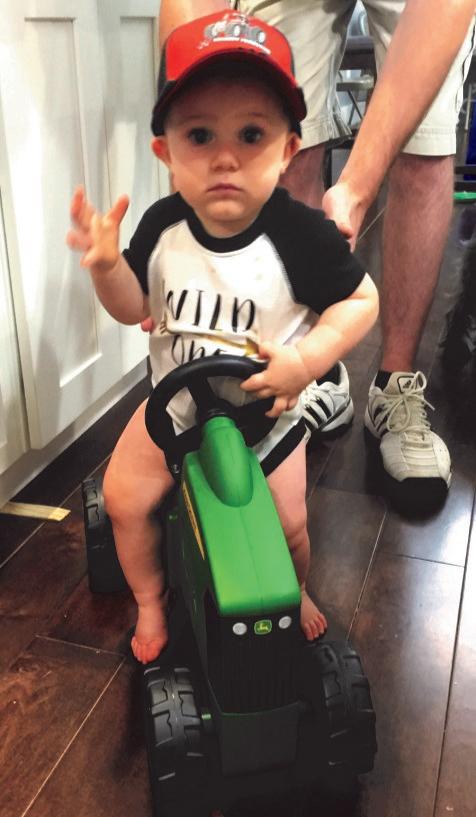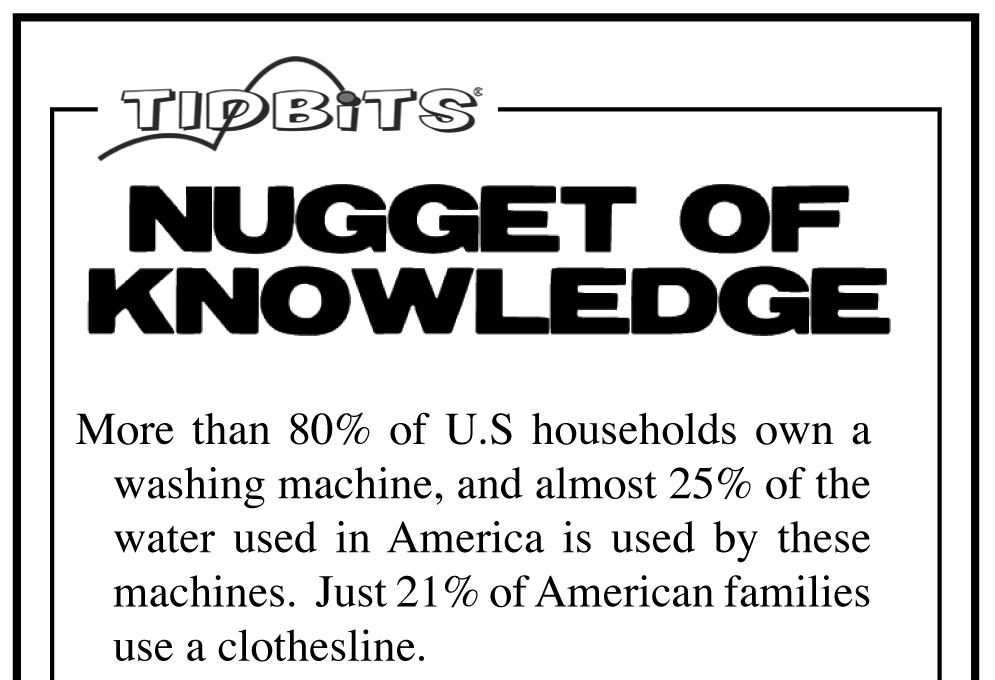










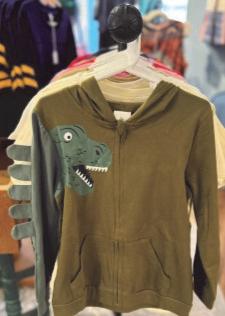










by Kathy Wolfe
“This is the way we wash our clothes, wash our clothes, wash our clothes,” goes the old ditty. This week, Tidbits delves into the history of the process of doing the laundry!
• Several inventors conceived of the idea to make washing clothes easier. The first drawing of a washing machine appeared in a British publication called “The Gentleman’s Magazine” in the January, 1752 issue. In 1767, Jacob Schaffer published his design in Germany. A British patent was issued in 1782 to Henry Sidgier for a rotating drum washer. Early washers featured enclosed containers with grooves, fingers, or paddles along the walls. The user still had to use a stick to rotate and agitate the laundry.
• In 1843, Canadian inventor John Turnbull debuted a washing machine with a wringer mechanism and the 1862 London World’s Fair introduced a rotary washing machine with rollers for wringing.
• During the 1920s, soap flakes were used to wash clothes. It wasn’t the best idea, because of poor performance in hard water. The flakes left a ring in the machine, dulled colors, and left whites a dingy gray. turn the page for more!
















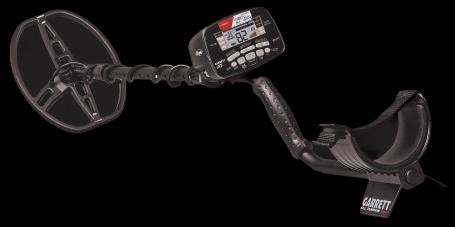









Of The Mid-Ohio Valley
is Published & Distributed Weekly By: CindAl Publishing Company 812 55th St. Vienna, WV 26105 e-mail: alan@tidbitsmov.com
Advertising: 304.210.3812
We reserve the absolute right to accept, reject, discontinue or refuse any advertisement personal or commercial that we deem may not be conducive for our publication or Tidbits®. The publisher does not assume any responsibility for the claims of its advertisers. Tidbits® is committed to remain a family oriented publication. www.tidbitsmov.com
• Researchers at Procter & Gamble set out to revolutionize the laundry process. The company labored for years trying to discover a way to remove heavy soil from clothes. P&G scientist David Byerly was responsible for isolating two-part molecules he called synthetic surfactants. One part pulled grease and dirt from the laundry, as the other suspended the grime until it could be rinsed away. In 1933, the company introduced Dreft, which worked well for light soil, but was unable to attack difficult grime.
• Byerly continued his quest for another 13 years and finally came up with the formula for Tide, the world’s first heavy-duty laundry detergent in 1946. Tide was an instant success and was soon the nation’s leading detergent, a position it still holds. In 1968, P&G added enzymes to Tide that broke down protein and carbohydrates, making it easier for them to be carried away in the rinse water.
• Procter & Gamble debuted Downy fabric softener in 1961. Fabric softeners work by coating fabric with chemical compounds with fatty acids that transfer anti-static properties to the surface, removing static cling and reducing wrinkles, all while adding a pleasant fragrance to the laundry. Softeners cause the fabric’s threads to “stand up,” making the clothes softer and fluffier. While you might love the soft feel and fresh scent of your towels, fabric softeners, with their silicone oil composition, are frequently the cause of towels’ reduced absorbency.
• Snuggle fabric softener was introduced by Unilever in 1983. Their trademark Snuggle Bear has been around since 1986. Wayne L from Belpre OH Found Tommy In Issue 1254



Find him and enter the weekly contest, please send us a message including your name, Postal mail address the issue number you are referring to and which ad is hosting Tommy for the week! Visit www.tidbitsmov.com or send the answer with the above information to alan@tidbitsmov.com OR you may send us a private message to our Facebook page - Tidbits MOV. PLEASE do not post the answer directly to the page - that ruins the fun for everyone. All winners will be drawn randomly and will be posted weekly. As with all our contests, though you are welcome to play every week, you are only eligible for one winner per household per month.














• In 1965, Conrad Gaiser, a chemist who had worked in the soap and detergent industry, lived with his wife Audrey on the top two floors of a four-story building. The laundry facilities were on the ground floor. In order to save Audrey the time and effort of running downstairs to add fabric softener to the final rinse cycle, Conrad experimented with creating dryer sheets. He treated small pieces of cotton flannel with liquid softener, then put them in the dryer with the wet laundry. The heat and moisture warmed up the flannel and spread it on the clothes. He continued improving his invention, receiving a U.S. patent for his “Tumble Puffs” in 1969. He sold the rights to Procter & Gamble, who marketed his product as Bounce, beginning in 1975.
• Today, dryer sheets are woven sheets of fibers that are coated with stearic acid, which melts in the heat, coating clothes to make them feel softer while reducing static. Unfortunately, they can also leave a waxy film on clothes. The film also coats the interior of the dryer, which can build up on the filter, blocking its holes. The coating can also affect flame-retardant fabrics, making items such as children’s pajamas less fireresistant.
• The good news about dryer sheets is their usefulness in other household tasks. They’re good for removing soap scum from shower walls and for picking up pet hair from furniture. They can be used to eliminate a musty smell from old books as well as acting as an air freshener. Dryer sheets are effective for polishing shoes, cleaning baseboards and window blinds, dusting screens of TVs and other electronics, and even repelling mosquitoes.




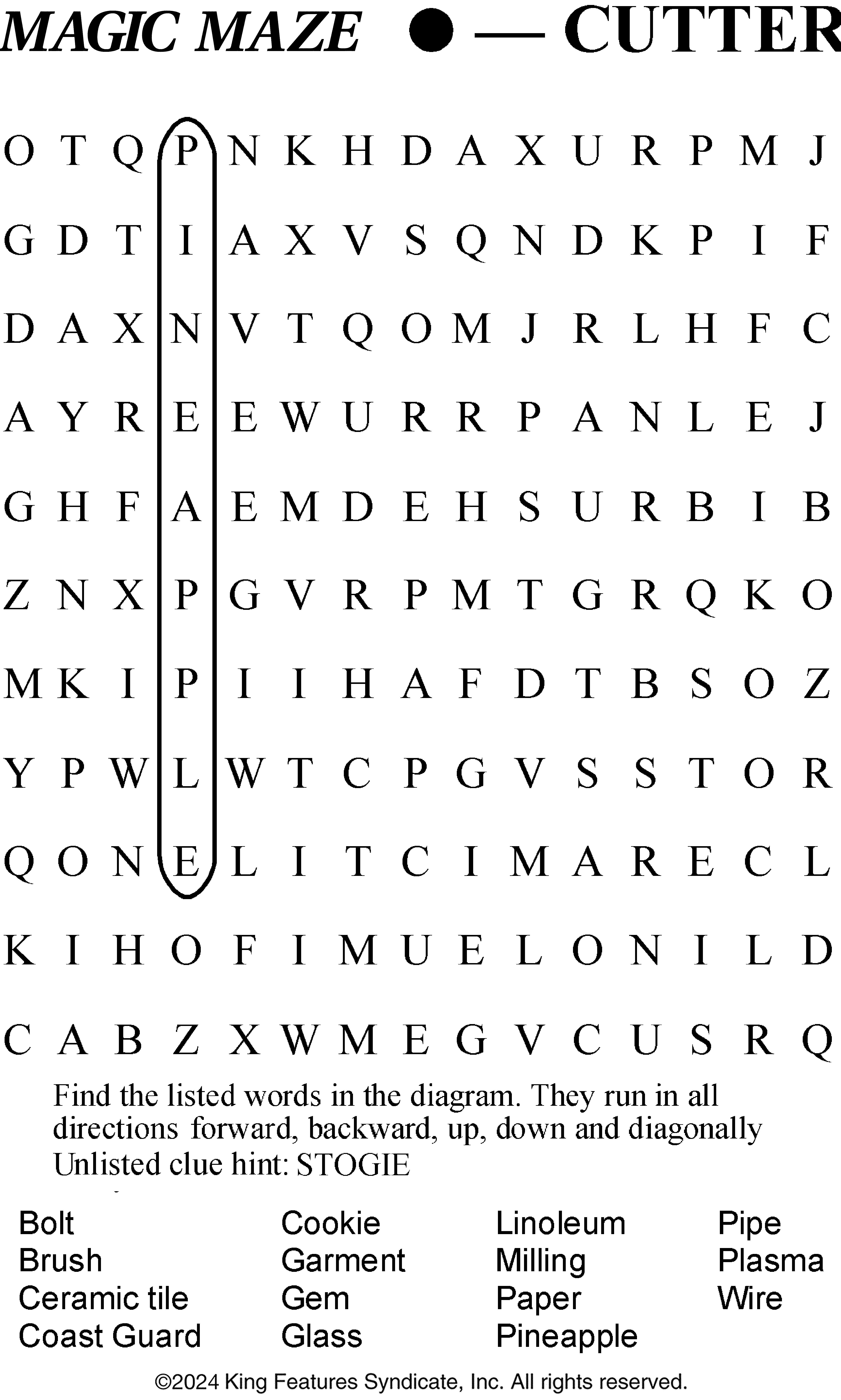





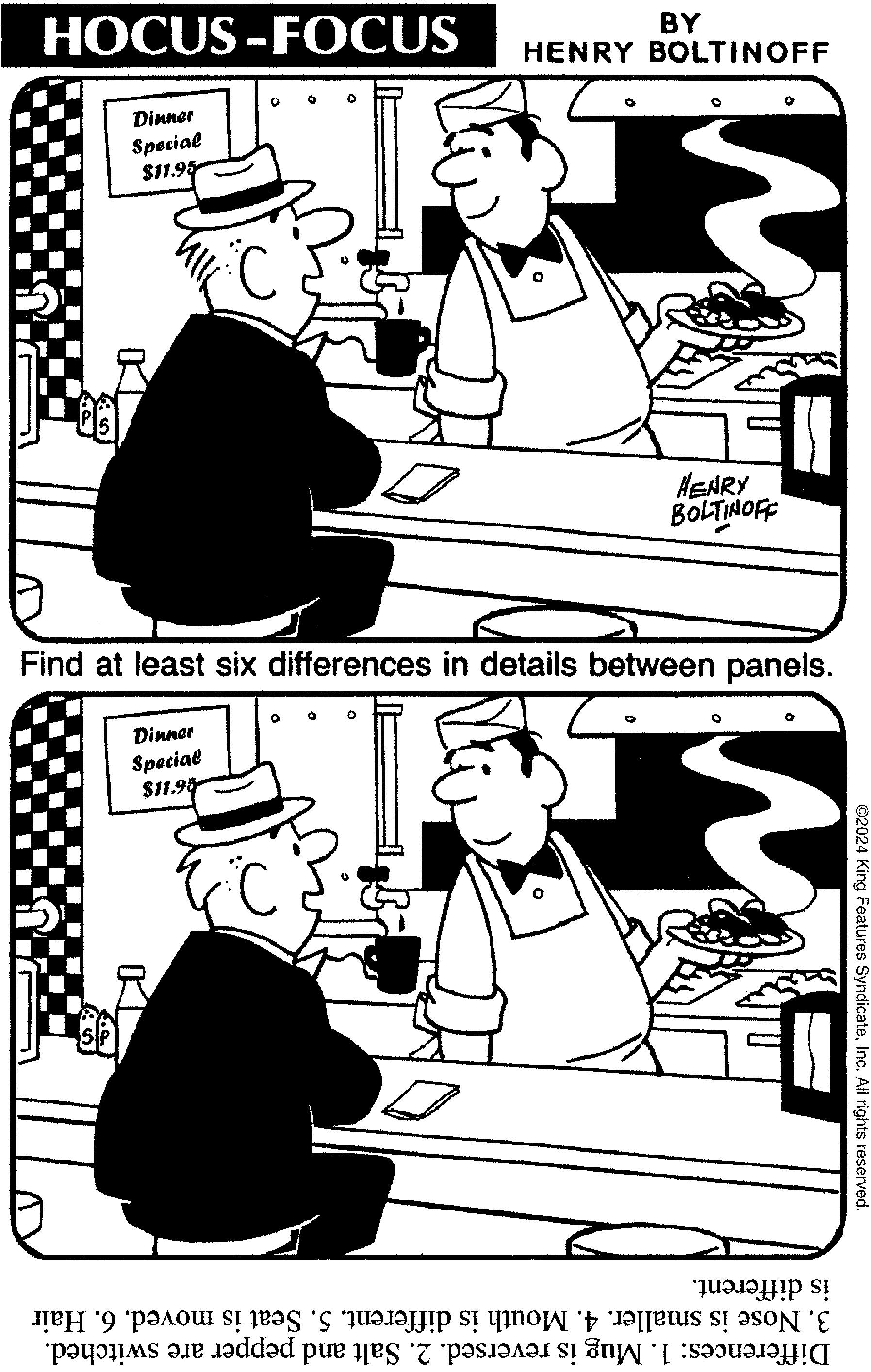

• America’s first liquid laundry detergent, Wisk, was introduced by the Lever Brothers Company in 1956. Their 1968 ad campaign was wildly successful, with the slogan “Ring Around the Collar,” touting Wisk’s ability to fight stains on shirt collars.
• A University of Georgia study revealed that about 30% of the population has a fragrance sensitivity and is irritated by scented laundry products.
• The first hand-cranked clothes dryer came into use around 1800. They were a type of ventilator, a large metal drum with holes in it. The barrels were suspended over an open flame and turned by hand. Dayton, Ohio inventor George T. Sampson is credited with the first patent of an automatic clothes dryer. His 1892 patent idea consisted of a frame rather than a barrel, and was suspended over a stove. Electric clothes dryers appeared around 1915, but the first fully automatic dryer wasn’t in use until 1938, the brainstorm of a North Dakota farmer named J. Ross Moore, who made a deal with the Hamilton Manufacturing Company in Two Rivers, Wisconsin to produce his invention.
• It’s estimated that Americans do a total of 660 million loads of laundry a week. An older washing machine can use 40 gallons of water per load. Newer energy-efficient washers cut that amount down to 14 gallons. A front-loading washer uses significantly less water than a top-load model. Even with an energy-efficient model, six loads of laundry per week use over 4,300 gallons of water annually. For an older washer, that figure exceeds 12,000 gallons! But the biggest expense of running a washer is the cost of heating the water, which accounts for 90% of the energy usage.


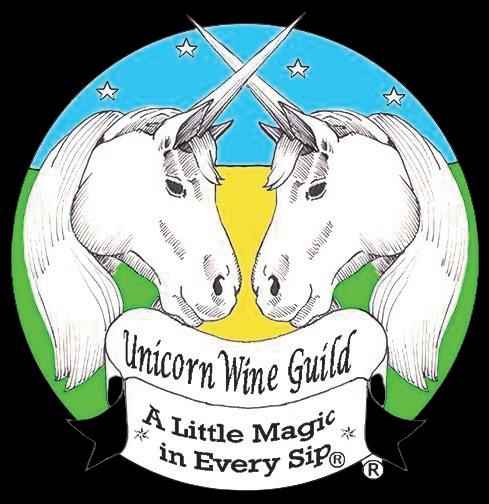



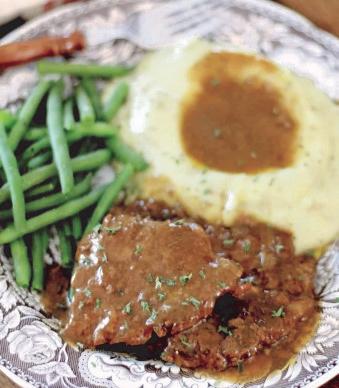

When the summer heat has you avoiding the oven, the Philly Cheesesteak steps up as the perfect quick dinner solution. This iconic sandwich cooks up fast in a skillet, keeping your kitchen cool while delivering a hot, satisfying meal. Now, let's dive into the delicious world of the Philly Cheesesteak. Picture this: thinly sliced rib-eye steak cooked to perfection on a hot griddle, paired with caramelized peppers and onions, and smothered in your gooey melted cheese of choice, all happily nestled within a soft, pillowy roll. It's a sandwich so beloved, it's practically synonymous with the city of Philadelphia itself it's the Philly Cheesesteak.
Let's go back in time to the origins of this iconic sandwich. The Philly Cheesesteak made its debut in the early 20th century, courtesy of a visionary duo: Pat Olivieri and his brother Harry. As the story goes, Pat, a hot dog vendor, decided to grill some beef one day and slap it on a roll. Little did he know he was about to spark a culinary revolution. The sandwich gained popularity among taxi drivers and soon became a staple of Philadelphia street-food culture.
Ah, but here's where things get interesting the age-old debate over what makes a Philly Cheesesteak truly authentic. Is it all about the type of cheese? Should the onions be chopped or sliced?
Sauteed peppers? Yes, or no? And what about the roll should it be soft and fluffy or crusty and chewy? These questions have sparked fierce debates among cheesesteak aficionados for decades, with no clear consensus in sight. One thing's for sure: Everyone has their own take on the perfect Philly Cheesesteak, and defending your favorite variation is practically a sport in Philadelphia So, whether you're a purist who swears by the classic combination of rib-eye and Cheez Whiz, or a maverick who likes to mix things up with peppers and mushrooms, one thing's for certain: The Philly Cheesesteak is a culinary delight.
Here are some tips to make this delicious meal even faster. Check for presliced, thinly shaved beef steak in the butcher case of your favorite grocery store. You can also use frozen sliced bell pepper and onion blend in place of the fresh onion and pepper in this recipe.
Yield: 4 servings
Total Time: 30 minutes
What You'll Need:
3 onions, very thinly sliced
2 bell peppers, any color, very thinly sliced
2 tablespoons vegetable oil
1/2 teaspoon garlic salt
1/2 teaspoon ground black pepper
8 slices cheese, mozzarella, provolone or Cheez Whiz
4 Italian style bread rolls, split lengthwise
1 1/2 pounds beef rib-eye or tenderloin, very thinly sliced
Here's How:
Slice the onions and peppers. Heat half
COUNTRY
COUNTRY




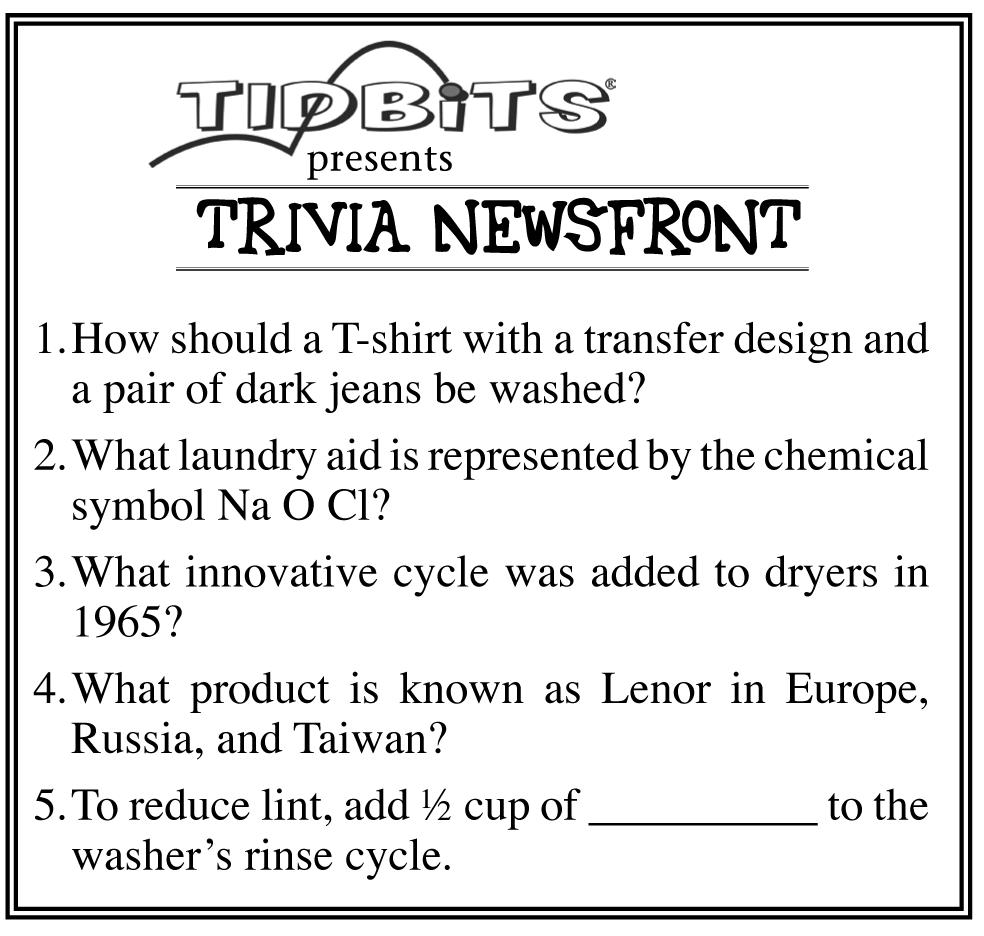
You can fill your home with a fresh, clean scent in a hurry by placing fabric softener sheets in a vent or behind fans.
of the oil in a large skillet on mediumhigh heat. Add onions and peppers, season with garlic salt and black pepper. Sauté until soft and set aside.
Add remaining oil to the skillet and quickly fry the steak until it's just beginning to brown. Do not overcook this. Return the onions and peppers to the pan, on top of the steak, and top with cheese slices. Cook until the cheese melts. Divide the steak, veggie and cheese mixture between each of four rolls and serve. As you enjoy your Philly Cheesesteak, remember its rich history and the passionate debates it inspires. It's more than just a sandwich; it's a piece of our culinary heritage. And in the spirit of brotherly love, let's celebrate our own delicious variations of this classic, while keeping our kitchens cool and our taste buds happy.
***
Lifestyle expert Patti Diamond is the penny-pinching, partyplanning, recipe developer and content creator of the website Divas On A Dime Where Frugal, Meets Fabulous! Visit Patti at www.divasonadime.com and join the conversation on Facebook at DivasOnADimeDotCom. Email Patti at divapatti@divasonadime.com (c) 2024 King Features Synd., Inc.
Mouthwatering Philly Cheesesteak a quick and delicious skillet dinner!
PHOTO CREDIT: www.JasonCoblentz.com
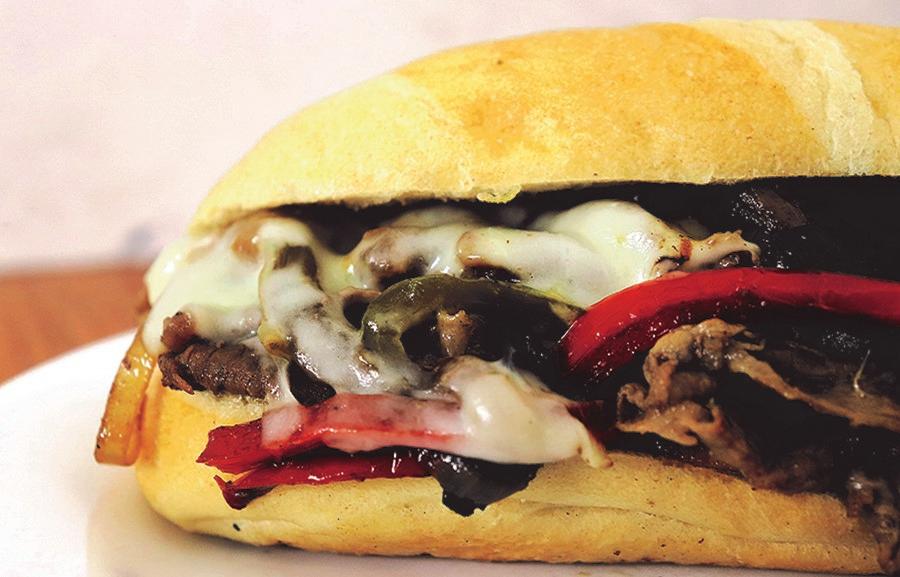




Robin Hood Days are celebrated this week, giving Tidbits the chance to delve into the facts and fiction of this legendary outlaw.
• The story of Robin Hood, the one who reportedly stole from the rich to give to the poor, is filled with tales that contradict each other, that may or may not be based on fact, while having some historical roots. Ballads sung by roving minstrels of the 14th century told of a yeoman who lived with his crew of “merry men,” thieves who roamed the expanse of Sherwood Forest. While some accounts claim that Robin was a member of the nobility, many describe his yeoman status, that of a commoner who was in the middle ranks of servanthood to a noble household, perhaps cultivating the royal land.
• Robin’s struggles with the Sheriff of Nottingham came about because of the English decree that royal forests were prohibited to all but the King. Robin and his men settled there, killing the deer and generally antagonizing the Sheriff, who had the authority to impose exorbitant taxes on the area’s citizens. The penalty for killing a “royal deer” was usually execution.
• The tales are usually set during the 1100s, under the reign of King Richard, the Lionheart. Manuscripts in the British Museum claim that Robin Hood was born around 1160. Until around 1500, the tales were verbal, but the advent of the printing press put the sagas in writing. The first printed story was called “A Gest of Robyn Hode,” with the earliest surviving edition datingfrom 1500
• Robin’s loyal sidekick, Little John, was listed in the earliest of the tales. However, Robin’s love interest, the fair Maid Marian did not appear until the 15th century, hundreds of years after the initial minstrel ballads. Legend has it that she married Robin Hood in a Nottingham church, but it’s quite possible that she didn’t exist. (Continued page #7)



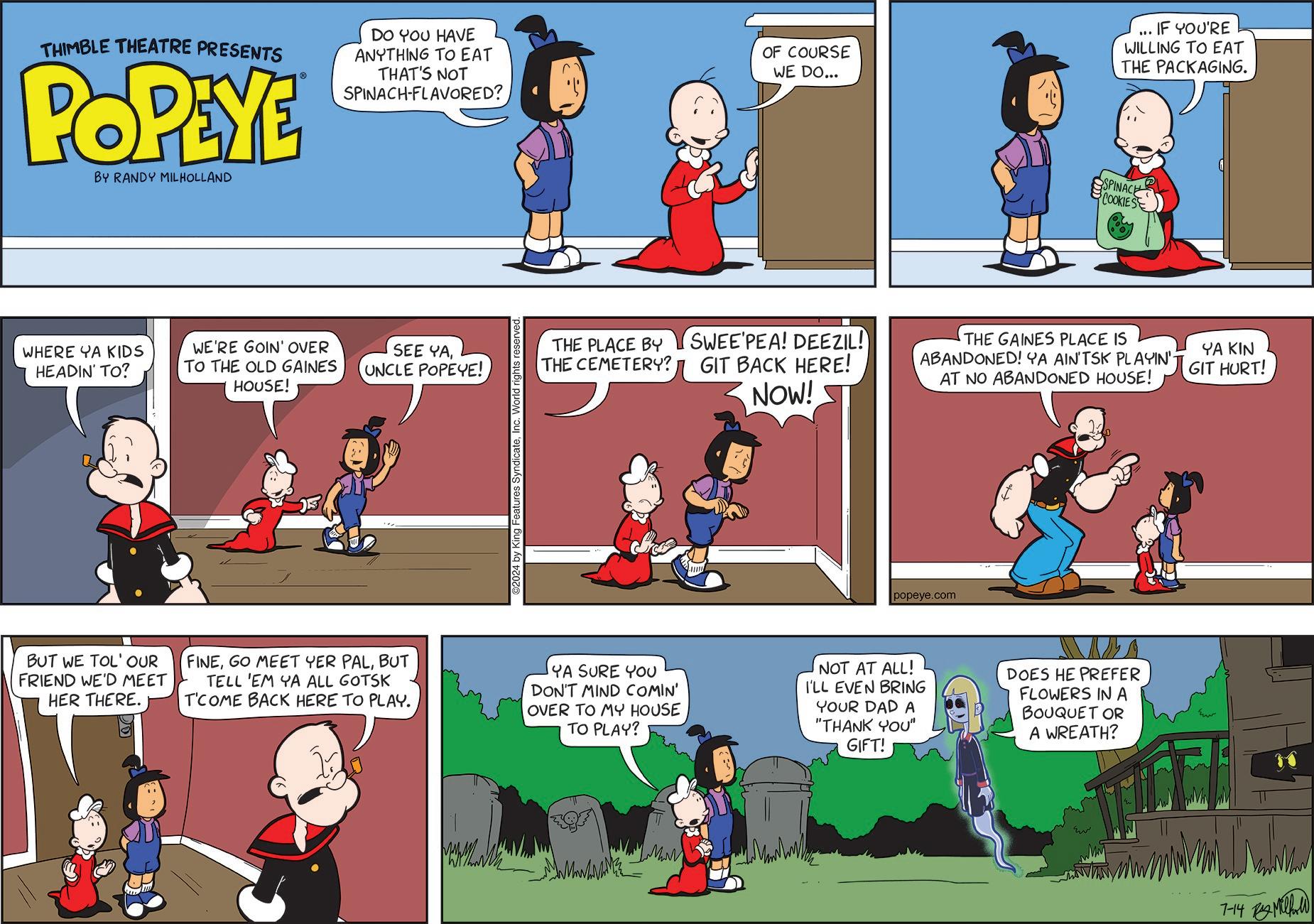
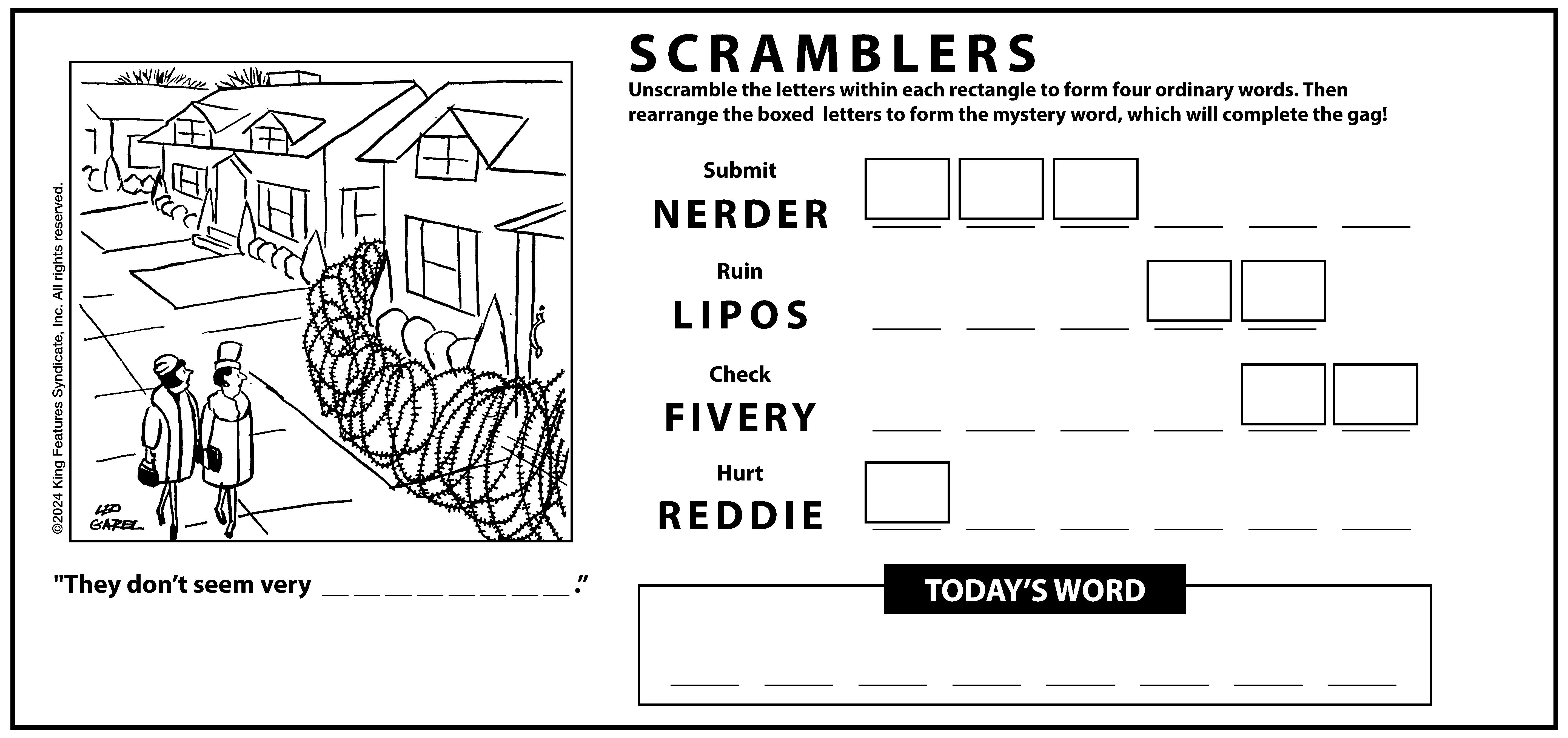

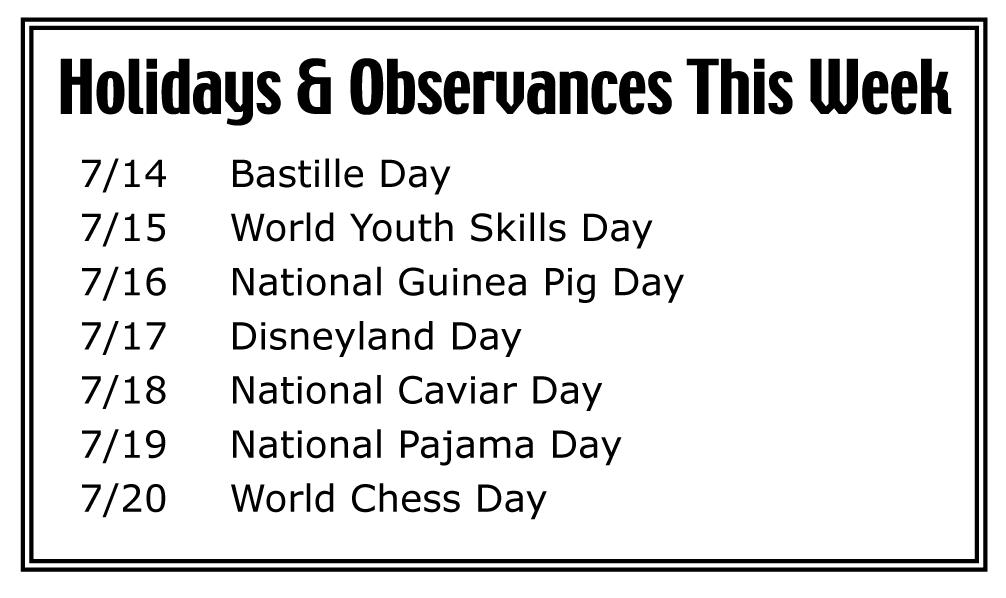


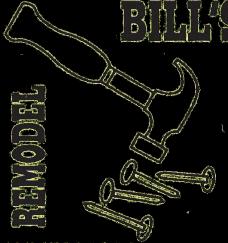



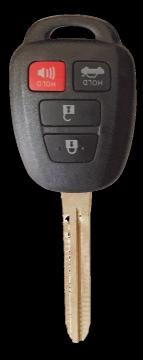






























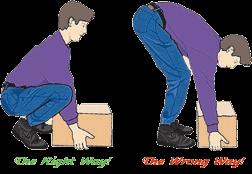



How often are lost pets found and returned?
Prevent your pet from becoming a statistic
DEAR PAW'S CORNER: My dog "Shakes" is a "bolter" he will bolt out the door and straight into the street if I'mnot careful. I worry constantlyabout himgetting lost in the woods nearby. If that happens, what should I do? I feel that lost pets don't get found very often. Jamie B. in Egypt, Maine
DEAR JAIME: Most dogs who get lost are found and returned to their owners at fairly high rates between 81% and 97%, according to a 2012 report. That doesn't make it any less stressful to their owners, who must scour the neighborhood and put up signs to find their dogs. The statistics for cats are much worse, with only 45% to 72% being returned to their owners. A bunch of things make it harder to find a lost cat: no ID tag, if the cat's collar breaks away on an obstacle or no microchip. Cat owners wait much longer than dog owners to report their cat missing probably because they feel most cats will come home on their own.
Those stats aside, Shakes would benefit greatly from being trained not to react when the front door opens. Each day, do about 15 minutes of training with him: Put Shakes on a leash and lead him toward the front door. Command "sit." Reach out for the front doorknob. If Shakes starts forward, bring your hand back to your side and command "sit" again. Repeat the doorknob reach until he no longer reacts but remains sitting. When he does this, give him a tiny treat. Progress to turning theknob, opening the door and leaving the dooropen. Shakes should remain sitting for each level to be successful. Keep the training fun, and be consistent. It'll help Shakes stay safe inside and improve your peace of mind. Send your tips, comments or questions to ask@pawscorner.com.
(c) 2024 King Features Synd., Inc.






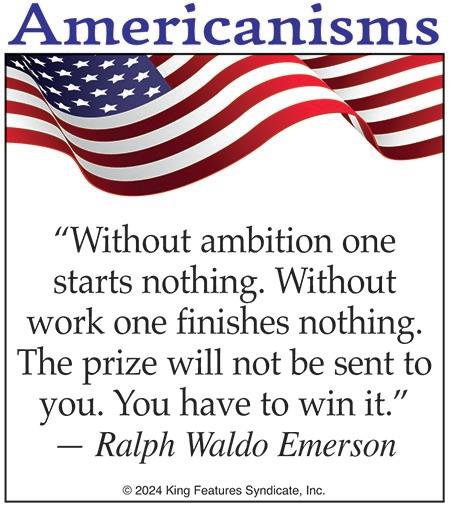










• While many versions paint Robin Hood as a commoner, others declare that he was an Earl, a member of the nobility, greatly skilled as an archer and swordsman. He is depicted as a soldier who fought in the Crusades, who returned to England to discover that his lands had been taken by the Sheriff. A 16th -century English playwright, Anthony Munday, portrayed Robin as Robert Fitzooth, the Earl of Huntingdon. In actuality, David of Scotland, a Scottish prince, was the Earl of Huntingdon during the reign of King Richard.
• There are also differing opinions as to whether Robin Hood was a “good guy.” While most legends portray him as the “Prince of Thieves” fighting for social justice for ordinary people, others say he was just a hottempered bandit who liked to fight. Those accounts pictured him not as giving to the poor, but rather keeping the loot for himself, instilling fear into the locals.
• Robin Hood has been a hit on the big screen since 1913. There have been 19 featurelength films about the outlaw since then. Notable actors include Douglas Fairbanks in 1922, Errol Flynn in 1938, Sean Connery in 1976, Kevin Costner in 1991, and Russell Crowe in 2010. Disney produced two films, the first in 1952, and the 1973 animated version. The only parody of the story was Mel Brooks’ “Men in Tights,” released in 1993, starring Cary Elwes.
• Since 1954, Sherwood, Oregon has hosted The Sherwood Robin Hood Festival every July, an event that draws 20,000 enthusiasts. The gala offers an archery tournament, fencing lessons, re-enactments, music and dance, and appearances by Robin Hood and his entire crew.

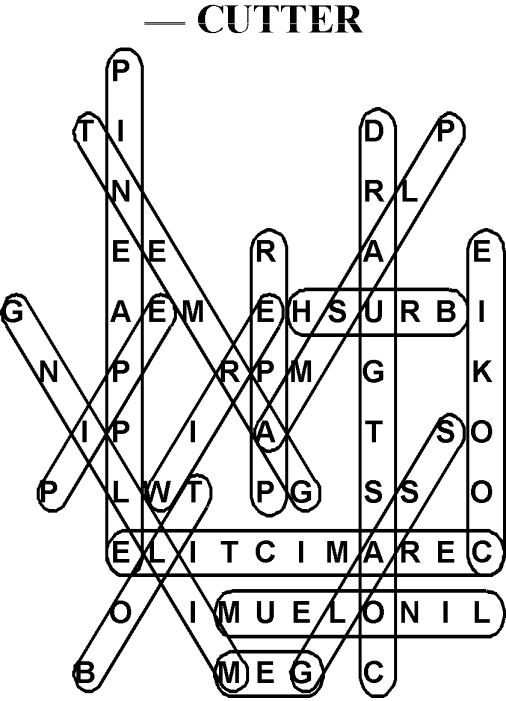


* Glassware will sparkle if you add a capful of bleach to the rinse water when hand-washing dishes.
* "Berries are in season, and I use berry baskets for lots of little storage uses. The best one is to use one to hold my sponges at the sink area. It keeps small brushes corralled as well." I.R. in Florida

* "We had an impromptu princess/magical fairy tea party at our house yesterday, and we came up with the best on-the-spot magic wands. We cut big stars out of paperboard (like a cereal box) and decorated them with stickers, construction paper and glitter, then we threaded them on long kebab sticks. I snipped the pointy end and covered it with colorful tape. Presto, party wand!" E.D. in Maine
* To keep salt from coming out of a saltshaker too quickly, add some plain, uncooked white rice to the salt. The large grains of rice will block some of the holes,
causing less salt to come out with each shake.
* "When I take my dog to 'Grandma' for dog sitting, I measure out each meal into a plastic zipper-top bag. This way, Mom doesn't have to remember how much to feed at each mealtime, and it makes it easy to serve."
V.Y. in Texas
* "At my child's day care, there is a 'Where's Mommy and Daddy?' board. Parents bring in a picture of themselves at their job, and the children can see the picture and know that it shows what Mommy or Daddy is doing while the child is playing." S.E. in Missouri
